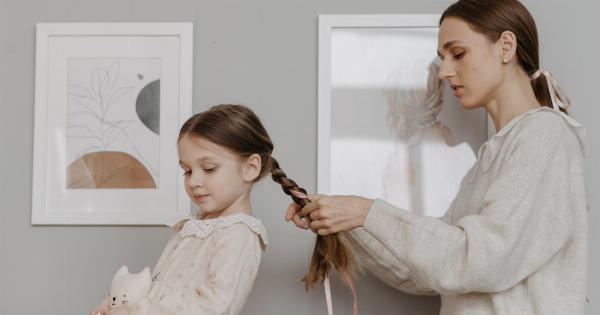Having curly hair can add a touch of playfulness and glamour to your overall look. While there are several ways to achieve curls, using heat styling tools such as curling irons can often cause damage to your hair.
Luckily, there are plenty of creative and heat-free methods to curl your hair that not only protect your locks but also create stunning curls. In this article, we will explore five innovative ways to curl your hair without the use of heat styling tools.
1. Bantu Knots
Bantu knots are not only a great way to curl your hair, but they also create a unique and trendy hairstyle. Start by dividing your hair into multiple sections, depending on the size of the curls you desire.
Take one section and twist it tightly from roots to ends. Wrap the twisted section around itself to form a knot and secure it with a bobby pin. Repeat this process for all sections of your hair and leave the knots in overnight.
In the morning, carefully unravel the knots and run your fingers through your hair to achieve beautiful, natural-looking curls.
2. Twist-Out
A twist-out is a popular technique for achieving defined and elongated curls. Begin by sectioning your hair and apply a curl-enhancing product or leave-in conditioner to each section. Take one section of hair and divide it into two smaller sections.
Twist the two sections around each other, working your way down until you reach the ends. Repeat this process for all sections of your hair and leave the twists in overnight. In the morning, unravel the twists and gently separate the curls with your fingers for a gorgeous twist-out hairstyle.
3. Flexi Rods
Flexi rods are flexible, foam-covered rods that provide a heat-free and comfortable way to curl your hair. Start with clean, damp hair and apply a styling mousse or curl-enhancing product to enhance hold.
Take a small section of hair and wrap it around a flexi rod, starting from the ends and rolling it up towards the roots. Bend the ends of the rod to secure it in place. Repeat this process for all sections of your hair and leave the flexi rods in until your hair is completely dry. Once your hair is dry, carefully remove the rods to reveal stunning bouncy curls.
4. Pineapple Curls
Pineapple curls are a simple method for achieving loose and voluminous curls overnight. Begin by flipping your hair upside down and gathering it at the top of your head as if you were creating a high ponytail.
Secure your hair with a soft hair tie or a scrunchie, making sure not to flatten or disturb the curls. To protect the curls further, wrap a silk or satin scarf around your head. In the morning, remove the hair tie and scarf, and gently shake out your hair for effortlessly glamorous curls.
5. Ribbon Curls
Ribbon curls are a fun and unique way to create spiral curls. Start by sectioning your hair and dampen each section with water or a curl-enhancing spray.
Take a small section of hair and wrap it around a fabric ribbon, like you would when wrapping a present. Tie the ends of the ribbon together to secure the hair in place. Repeat this process for all sections of your hair and leave the ribbons in overnight.
Carefully remove the ribbons in the morning, unraveling the hair to reveal playful and defined ribbon curls.
Conclusion
When it comes to curling your hair, there’s no need to rely solely on heat styling tools. With these creative and heat-free methods, you can achieve a variety of stunning curls while keeping your hair healthy and protected.
Whether you experiment with bantu knots, twist-outs, flexi rods, pineapple curls, or ribbon curls, you’ll have a head full of beautiful, natural-looking curls in no time.






























